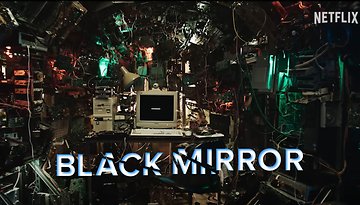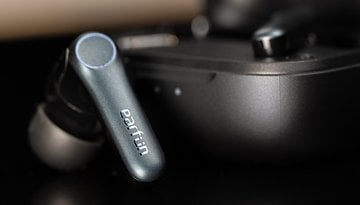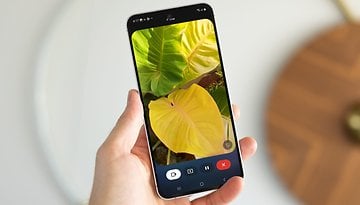The 4 biggest tech fails of 2019


The decade of mobile phones is coming to an end - the driving force in the next tech decade will be the Internet of Things. Like every dying species, smartphones have blossomed strangely over the past few months, and there have been some big failures. A little consolation for Huawei & Co.: Uber and Facebook, for example, who have all taken a good look into the toilet this year. We have put together for you the "best" slips of the last year. And they're not just about smartphones.
Prologue: the problem of market saturation
I can still remember how AndroidPIT and its growth felt back then. There was something new to report almost every day - and everything was exciting.
It wasn't a miracle either. The Android software itself looked frightening and felt like it was knitted with a hot needle. Android didn't have any graphical guidelines for developing apps - and that's what they looked like. One was happy when the display resolution went from 180 ppi (for example on the HTC Dream) to 265 ppi (on the Motorola Milestone), because one could still see differences clearly. Remember: some of the first Android smartphones had a resistive display instead of a capacitive one. In this case, it is not the electrical voltage of the skin that is used, but the firm pressing of the finger to issue the command.
Today is different. The display resolutions are all beyond the 400 mark - even though the screens today are much larger than they were 10 years ago. There are no bad smartphones anymore as long as they are legally purchased here in Europe. Even for a price of around €250, you can buy a phone that will bring tears of joy to your eyes when you compare it to a device from three or four years ago.
That's terrible news for manufacturers. What were those times when new weather widgets were announced and the tech community had joy in their eyes because everything was so beautifully animated? Everything's different now. Today, manufacturers have to rely on regular buyers or hope that they will somehow make it into the selection of telcos. But without a big suitcase of money, nothing is possible at the mobile phone providers - and even at Amazon.
So what remains is experimenting and hoping that somehow you will get something right. By the way, this applies not only to smartphone manufacturers but also to the tech industry. Some mistakes were made.
Fail No. 1: Foldable smartphones
I write the title in the plural, but above all I mean the form factor of the Samsung Galaxy Fold. Don't get me wrong: I bow to the technical mastery of the Samsung engineers, who really managed to design a display that can be treated almost like paper.
But why only this form factor? What was Samsung thinking? Folded together, the fold is a fat lump that forces every shirt pocket towards the knee and its wearer is almost there with it. Sure, the fold is a real feast for the eyes when unfolded. But then it is as bulky as an open umbrella.
It seems to me as if Samsung had not made any final thoughts on the subject of "foldable". In the land of origami (okay, that's not South Korea in itself, but Japan. But it is close!) one thought probably that this was a good idea.
Even the Huawei Mate X doesn't knock me out. After all, it looked a bit slimmer overall. But here, too, Huawei has innovated without any real sense.
In addition, the smartphone top dogs are expensive and have set the price point beyond all sound limits. "If there is no real usage benefit, then we must at least position the thing as a real status symbol. Then limit the number of pieces - and the thing sell like hot cakes", I hear the responsible marketing bosses say. As a reminder, both the Fold and the Mate X each cost well over €2,000.
But salvation is at hand. With the Razr, Motorola has probably achieved what Samsung wanted to achieve. If you package the future with the good old days, then you get a real credit factor that really makes sense. "Flip instead of fold" is the motto. And apparently Motorola not only halves the size of the display with the Razr, but also almost the price - the Razr is expected with a selling price of about €1,400.
Fail No. 2: the Huawei Mate 30 and the missing software
Richard Yu, who is otherwise normally in such a good mood and young at heart, has probably got one or two more wrinkles of worry this year. After all, the Huawei CEO, who is accustomed to success, had to suffer a few defeats, at least in the western countries.
He probably owes this mainly to U.S. President Trump, who used Huawei mainly as a pawn in his trade war with China. Huawei is repeatedly dragged onto the stage like a plaything - no matter whether it's the founder's daughter fixed in Canada in a media-effective manner or that one forbids local companies to do business with Huawei.
Especially on the last point, the Trump government has a real interest in the YOU know what. Because without Google, even the best smartphone of the year is only half as good.
With the Huawei Mate 30 Pro, the Shenzhen-based company has really succeeded in creating an all-round great device. However, it is now forced to launch the Android phone without Google's apps. Unfortunately, this doesn't feel good at all, but rather like The Simpsons without Bart and Homer.
It is likely to be difficult for the company that was so close to getting to the top of the big top dogs here in Europe. Without Google apps, however, this rise will be halted for the foreseeable future.
Fail No. 3: hardware first, software second
One's joy, another's sorrow: while the year 2019 represented an erosion for the success of Huawei in Europe, manufacturers such as Xiaomi, Oppo or Realme were able to take advantage of the moment and venture into our markets.
The trademark of all newcomers: great equipment for an almost unbeatable price! But there's something else the Chinese newcomers resemble. The software used here is usually - let's say - at a rather early stage.
You can see this very well in the example of Mi Note 10. Xiaomi shows courage and launches the first smartphone with a 108-megapixel camera. The image sensor developed with Samsung is in itself an absolute dream.
But the software is rather gritty. Our man Stefan tested the camera of the Mi Note 10 intensively and found some weaknesses. These are all due to software that has not been optimized for the hardware.
There are other examples here as well. For example, the software of the Roborock vacuum cleaners or the Xiaomi Smart Home app. Many smaller functions run only mediocrely, are not optimally represented or even still in Chinese.
The motto often seems to be to bring a product to market as quickly as possible and then to smooth the software out later with incoming customer complaints.
Anyone who thinks that this is just a purely Chinese phenomenon is mistaken. Google, Amazon, and Apple have also thrown remarkably faulty software onto the market this year and only gradually ironed out the blunders.
It bothers me. From my point of view, the software is an extremely important component of a product. Yes, you can easily change it later with updates, which is not possible with product design. But companies should (again) pay much more attention to this area in the future and deliver a product that is as error-free as possible and already optimized for the hardware.
Fail No. 4: E-scooters - an energetic party runabout with leg-breaking potential
I was so happy when I finally started to see the e-scooters: Freedom on two wheels, fast and almost effortless cruising through the city and bridging longer distances easily with public transport.
And yet I was angry about the politicians, who once again can't leave the church in the village and complicated everything. Insurance badge? Why? Other countries don't have that with scooters - and it works there! One drives nevertheless at not even 25 kilometers per hour through the city and is overtaken by every cyclist.
Dear politicians, I want to apologize to you at this point. I still find the (rental) scooters very practical. However, these things have drastically changed the cityscape, at least here in Berlin. The scooters are all over the place, reducing the amount of space on sidewalks even further.
But what is much worse are the people who drive these scooters or, better still, use them somehow. I don't know why, but the Berlin scooter fan seems to be a special kind of person - and likes to drink. That certainly sounds striking and maybe it is to some extent. If you dismiss my thesis as too far-fetched, I invite you to come to Alexanderplatz on a weekend.
Racing around at quite high-speeds without driving license, sense and understanding, over the squares lined with people. I alone was already allowed to make two smaller acquaintances with people on scooters and me their borrowed equipment close up - only because the lady and the gentleman overconfidently thought slalom runs through the human obstacles were a good idea. Nothing happened to the drivers or to me, but there have already been some serious accidents with e-scooters this year.
In addition, all business plans of the big rental companies only make sense when the scooters have a shelf life of more than 12 months - not to mention the ecological approach. But brands like Voi, Tier, and Lime are still far away from this.
So it is quite possible that the concepts should be reworked and that the initial skepticism of the experts and politicians was not exaggerated. So e-scooters are definitely a fail in 2019 for me. Hopefully, I can change my mind about this soon.
A small but important piece of advice: that was my very personal opinion. There will certainly be some of you who disagree with me and have a different view of things. That's okay! However, I would like to ask that we exchange our opinions on a factual - or gladly funny - level. After all, it's Christmas - and at the very least we should love each other. Thank you.




















In my experience software optimizations are more important than having just a good hardware. Even though software itself is no substitute for a lacking hardware, but with decent and reliable hardware and great, well optimized software, most satisfactory user experience can be achieved. It gives actual value and usefulness to the device and best returns to the money spent on it.
Supposed to be a reply to Marco below:
Microsoft has long shipped 80% complete product. It's their business model and has been widely followed.
-
Admin
Jan 2, 2020 Link to commentYes but it is still unfair and a bad business model, in my opinion
-
Admin
Jan 1, 2020 Link to commentPart of the problem seems to be that in the race to launch new products a lot of stuff is put on the market at an immature stage, with high prices, expecting the buyers to pay for the development